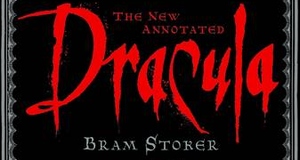Vampires: The Ever-Changing Face of Fear
By
2010, Vol. 2 No. 05 | pg. 2/2 | « So wherein lies the appeal of these blood-sucking beauties? Laura Miller of the Wall Street Journal claims it lies in modern women and girls’ fascination with and desire for the classic romantic hero of novels like Jane Austen’s Pride and Prejudice or Charlotte Bronte’s Jane Eyre. While traditional romance novels may easily satisfy this trend by setting the scene in, say, Victorian London, this presents the annoying issue of requiring female characters to follow the restricting laws and customs of the time. “Vampires have been used to represent sexual minorities, artists, drug addicts, bikers, even the mafia: any group, in short, both subject to ostracism for its social transgressions and prone to romanticizing its outcast status. The vampires who star in paranormal romance, however, are seldom scruffy or strung out… What these undead lovers promise is not just eroticism, but a particular variety of eroticism that their female admirers more than half suspect of being reprehensible and anachronistic, if not flat-out extinct: They offer old-fashioned romance in the arms of an alpha male. Here lies one of the unique pleasures that the vampire romance can provide for its female readers: the opportunity to enjoy an 18th- or 19th-century courtship while remaining a 21st-century woman” (Miller). Another take on this recurring trend is humans’ quest for immortality: a aspiration dating back millennia. Chris Richards, author of Forever Young: Essays on Young Adult Fiction, uses a DVD cover of The Lost Boys as an example: ‘“Sleep all day. Party all night. Its fun to be a vampire.’ Such a hedonistic reworking of vampire mythology well illustrates the point: images of the immortally young, aging and decline denied, endlessly repeating the pleasures of youthful irresponsibility, have had a wide and persistent allure.”Lauren Mack, a 19-year-old student at Daytona State College, agrees with Richards’ take. “When I was a little kid, I used to get every thing I possibly could on vampires because they lived forever but could still die if just the right circumstances occurred. That's what I wanted: to be immortal yet circumstantial.” Also, one should never underestimate the power of melodrama. On the success of Stephenie Meyer’s Twilight books in particular, Twilight movie director Catherine Hardwicke said she believes that the ever-present possibility of Bella's (the lead female character’s) death actually enhances the story's romantic appeal. “If ‘Romeo and Juliet’ came out now it would be just as popular,” she said. “Look at 'Titanic' a few years ago.” She’s on to something there: the extreme life-and-deathness of the adolescent notion of romance (Rafferty). Ancient vampires of lore were anything but as pleasant as the ones encountered in popular culture today. Their “origins are rooted at the beginning of time and almost all of then are founded on superstition, later swelling to massive proportions with the advent of Christianity” (Masters). Nearly every culture has had its own version of the vampire, each with different attributes, but all regarded as undeniably evil. The circumstances leading to vampirism include factors such as cannibalism, sacrifice, ancestor worship, plague, and premature burial. Suspicion of vampires spread throughout the rest of the world, going by different names and slightly different descriptions in each country: Vrykolaka in Russia, Nachzehrer in Germany, vukodlak in Hungary, strygia in Israel, ramanga in Madagascar, mandurugo in the Philippines, and pinyin in China. The superstition even hopped the proverbial pond to America in the eighteenth century- many new England families exhumed their loved ones to prevent them from causing illness or bad luck to the living. In most cases, corpses with a supposed potential for vampirism included those of witches, suicides, excommunicates, thieves, murderers, and those with untimely or violent deaths. To identify a vampire, people looked for finger-width holes in the soil above the grave, checked the corpse for open eyes, ruddy complexion, flexible limbs, unnatural preservation, or even growth in hair and nails. If corpses were found to have many of these traits, the common belief is that they must be exorcised, beheaded, or have their heart cut out, depending on the locale. The mass hysteria of these superstitions eventually died down; however, “actual” vampire sightings are still occasionally reported to this day, and the frenzy renews in small-scale. In 1970, a London newspaper spread rumors of a vampire haunting in Highgate Cemetery. More recently, in 2003 in the African country of Malawi, mobs of people stoned their governor and four others to death because they believed the people were conspiring with vampires. In 2004, in Romania, the relatives of a deceased man believed he had become a vampire, and dug up his corpse to remove his heart. In 2005, in Birmingham, England there were reports of an attacker who bit victims, perpetuating rumors of vampirism. The myth, it seems, lives on. ReferencesAldiss, Brian W. Blood Read: The Vampire as Metaphor in Contemporary Culture. Ed. Joan Gordon and Veronica Hollinger. New York: University of Pennsylvania P, 1997. Day, William Patrick. Vampire Legends in Contemporary American Culture: What Becomes a Legend Most. Lexington: University Press of Kentucky, 2002. DeBarros, Anthony. “This week's top 150 best-sellers.” Best-Selling Books Database. 9 Frayling, Christopher. Vampyres: Lord Byron to Count Dracula. Danbury: Faber & Faber, Incorporated, 1993. Germain, David. "`Twilight' time: Vamp tale seeks blockbuster bite.” 16 Nov. 2008. Associated Press. 17 Nov. 2008. Kreps, Daniel. “On the Charts: ‘Twilight’ Has the Teeth to Take Top Spot.” Rock and Roll Daily. 12 Nov. 2008. Rolling Stone. 17 Nov. 2008 . Masters, Anthony. Natural History of the Vampire. New York, NY: Putnam, 1972. Memmott, Carol. “Romance fans: Vampires are just our type.” 28 June 2006. USA Today. 19 Oct. 2008 . Miller, Laura. “Real men HAVE fangs.” Wallstreet Journal 31 Oct. 2008. Rafferty, Terrence. “Love and Pain and the Teenage Vampire Thing” New York Times 2 Nov. 2008. Rayworth, Melissa. “Hollywood's undead: They're just like us.” 07 Oct. 2008. Associated Press.19 Oct. 2008 . Richards, Chris. Forever Young : Essays on Young Adult Fictions. Grand Rapids: Peter Lang, Incorporated, 2008. Wright, Dudley. The Book of Vampires. Danbury: Omnigraphics, Incorporated, 1989. Suggested Reading from Inquiries Journal
Inquiries Journal provides undergraduate and graduate students around the world a platform for the wide dissemination of academic work over a range of core disciplines. Representing the work of students from hundreds of institutions around the globe, Inquiries Journal's large database of academic articles is completely free. Learn more | Blog | Submit Latest in Literature |
















